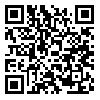Volume 13, Issue 3 (Summer 2023)
PTJ 2023, 13(3): 195-202 |
Back to browse issues page
1- Department of Sports Biomechanics, Faculty of Physical Education and Sports Sciences, Shahid Bahonar University of Kerman, Kerman, Iran.
2- Department of Motor Learning, Faculty of Physical Education and Sports Sciences, Shahid Bahonar University of Kerman, Kerman, Iran.
2- Department of Motor Learning, Faculty of Physical Education and Sports Sciences, Shahid Bahonar University of Kerman, Kerman, Iran.
Abstract: (1108 Views)
Purpose: This study aims to investigate the impact of neuromuscular exercises (NE) and local-indigenous games (LIG) on the static and dynamic balance of obese children.
Methods: Thirty obese children were randomly assigned to NE (n=15, mean age 10.47±2.1 years, body mass index (BMI) 29.15±3.01 kg/m2) or LIG (n=15, mean age 10.67±1.52 years, body mass index (BMI) 29.45±3.41 kg/m2) groups. Both groups underwent 12 training sessions, during which dynamic and static balance were measured with the Biodex device before and after training. Analysis of covariance (ANCOVA) and independent t-test were used to compare balance indices between the two groups.
Results: No significant differences were observed in static anterior-posterior balance between NE (0.82±0.10) and LIG (0.68±0.09). Similarly, no significant differences were found in static lateral-medial balance (NE: 0.82±0.10; LIG: 0.68±0.09) (P>0.05). Moreover, the dynamic anterior-posterior balance did not differ significantly between NE (0.79±0.08) and LIG (0.97±0.26) as well as the dynamic lateral-medial balance did not differ significantly (NE: 0.74±0.10; LIG: 0.93±0.15) (P>0.05).
Conclusion: This study suggests that both NE and LIG are effective in improving balance indices in obese children. However, no significant differences were observed between the two interventions.
Coresponding author: Mohammadtaghi Amiri-Khorasani, E-mail: amirikhorasani@uk.ac.ir
You can also search for this author in: PubMed, Google Scholar
Methods: Thirty obese children were randomly assigned to NE (n=15, mean age 10.47±2.1 years, body mass index (BMI) 29.15±3.01 kg/m2) or LIG (n=15, mean age 10.67±1.52 years, body mass index (BMI) 29.45±3.41 kg/m2) groups. Both groups underwent 12 training sessions, during which dynamic and static balance were measured with the Biodex device before and after training. Analysis of covariance (ANCOVA) and independent t-test were used to compare balance indices between the two groups.
Results: No significant differences were observed in static anterior-posterior balance between NE (0.82±0.10) and LIG (0.68±0.09). Similarly, no significant differences were found in static lateral-medial balance (NE: 0.82±0.10; LIG: 0.68±0.09) (P>0.05). Moreover, the dynamic anterior-posterior balance did not differ significantly between NE (0.79±0.08) and LIG (0.97±0.26) as well as the dynamic lateral-medial balance did not differ significantly (NE: 0.74±0.10; LIG: 0.93±0.15) (P>0.05).
Conclusion: This study suggests that both NE and LIG are effective in improving balance indices in obese children. However, no significant differences were observed between the two interventions.
Coresponding author: Mohammadtaghi Amiri-Khorasani, E-mail: amirikhorasani@uk.ac.ir
You can also search for this author in: PubMed, Google Scholar
Type of Study: Research |
Subject:
General
Received: 2023/05/20 | Accepted: 2023/06/10 | Published: 2023/07/1
Received: 2023/05/20 | Accepted: 2023/06/10 | Published: 2023/07/1
| Rights and permissions | |
 |
This work is licensed under a Creative Commons Attribution-NonCommercial 4.0 International License. |





